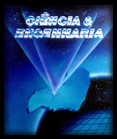BIOSTIMULATION INCREASES THE SPREAD OF OIL CONTAMINANTS IN SOILS
Abstract
This study aimed to evaluate the processes of interaction in a biodiesel spill simulation in a clay soil under different structural configurations in order to observe the effects of sorption present applying a biostimulation of NPK and different rainfall simulation. It was molded samples of 400 g of dry soil at different void ratios, different moisture contents, in a block of experiments being carried out with and without the presence of nutrients and simulating different rainfall under the samples. They were subjected to a simulated spill biodiesel being left in the percolation for 15 days. After this period, the samples were subjected to three simulation values of precipitation, allowed to stand for 15 days. Quantitative analyzes were performed using the ultrasound method determining the residual amount of the contaminant. When the samples were subjected to simulated rainfall it was perceived a greater leaching of the contaminant in the samples with added nutrients, indicating that the effects of saturation of the reactive fields of clay minerals can be observed. It was concluded that the application of biostimulation provides greater leaching of biodiesel increasing the damaging effects of pollution. Keywords: Contamination, biostimulation, sorption.Downloads
Published
2014-11-21
Issue
Section
Civil Engineering


